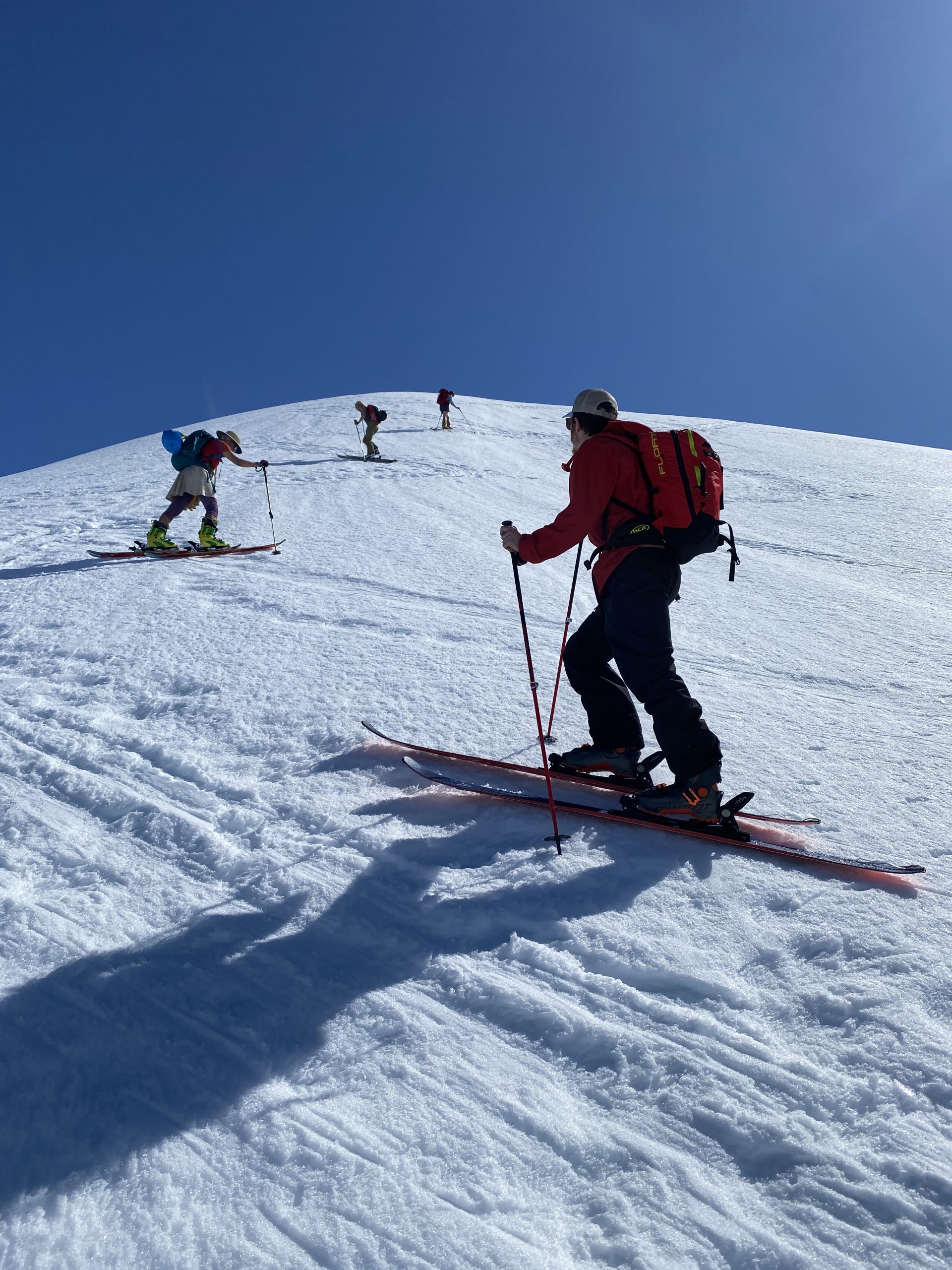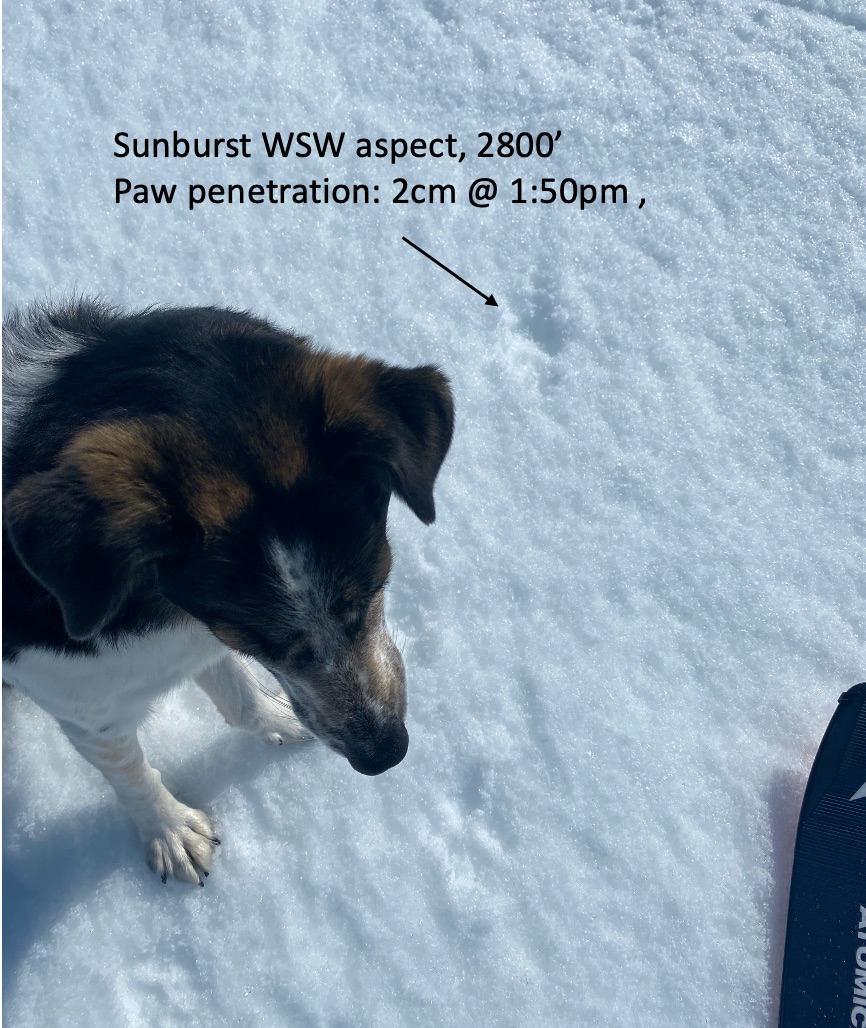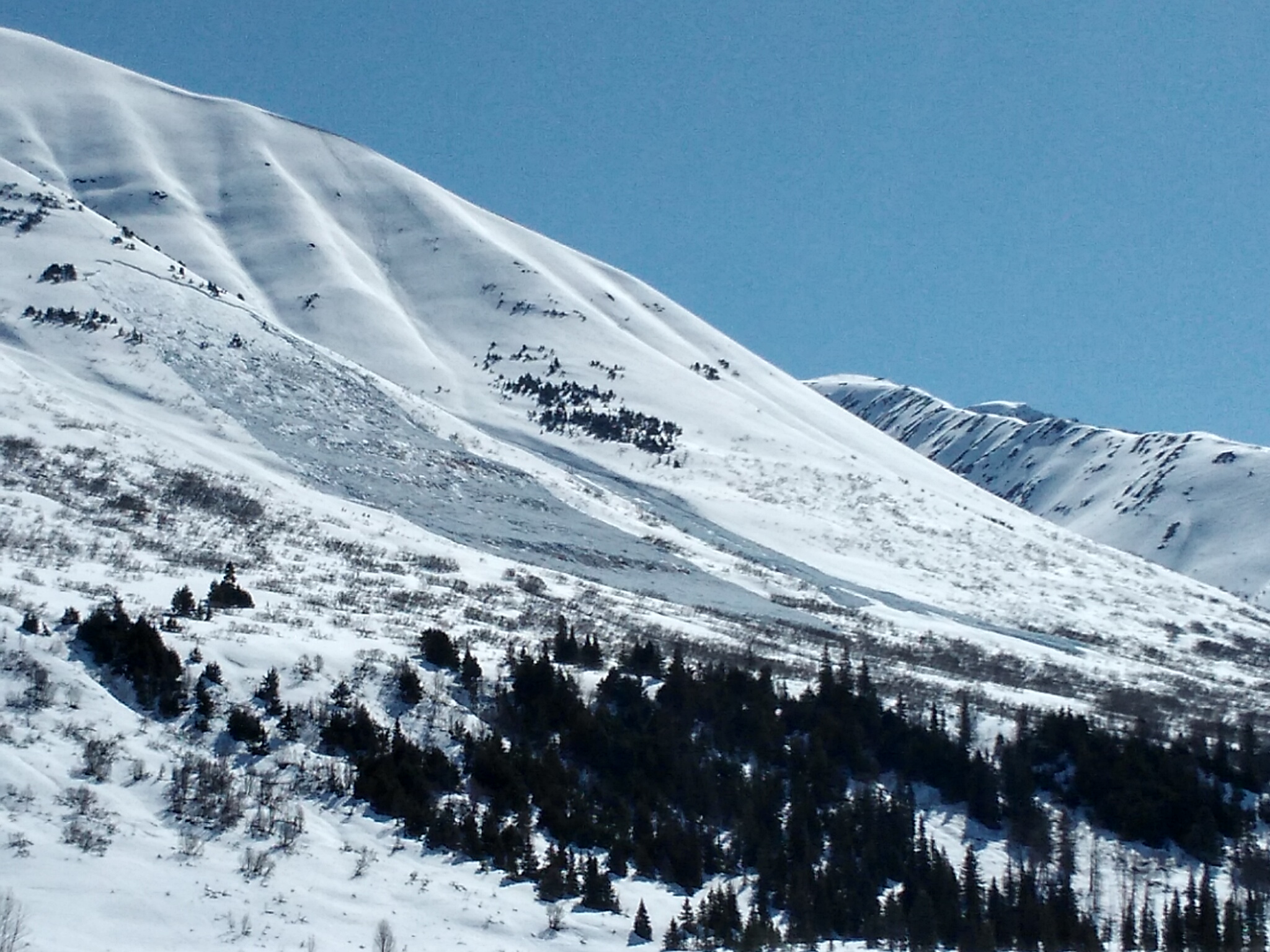Triggering a wet loose avalanche is likely on steep slopes that have softened enough to harbor boot-top (or deeper) wet surface snow. These ‘sluffs’ could be small or large pending the size of the terrain. They could gouge down and take the whole snowpack if the conditions are right and especially if the snowpack is thinner. These types of avalanches are nothing to mess with and can be quite destructive. Wet slabs on slopes seeing significant warming will be possible to trigger and can be extremely destructive. They can, and often are, triggered by a wet loose avalanche. Wet slabs are most likely to occur in areas with a thinner snowpack, such as Summit Lake. Although natural wet loose and wet slab avalanches will be possible today, it’s the human triggered avalanches that will be likely. Hence the danger rising to CONSIDERABLE in step with daytime warming and sunshine.
Timing is everything… The goal for a fun day in the mountains is to catch the surface when it’s melted a few inches but not so much that your boot or snowmachine track is sinking way down into 10+” of mush. At this point, it’s time to head to another aspect. As we know, north and east aspects warm first, then south, then west, and last north gets the sun again this time of year. Paying close attention to how much wet snow exists on the slopes you encounter is key. Exit routes require thought as well. We don’t want to be forced into traveling under steep rocky terrain baking in the sun that could shed snow onto us.
Cornices: These features are oozing over in the warm temperatures and will become easier and easier to trigger as time goes on. Be aware to not accidentally travel onto one and limit any exposure under them.
After 8 days of unseasonably warm springtime temperatures bringing down the house, it looks as though the mountains are starting to adjust to the spring transition. In case you missed it, here’s a little video of the widespread natural avalanche cycle that occurred last weekend. Since then, we’ve seen a handful of natural glide avalanches, wet loose and wet slab avalanches. Most of the wet slabs are being seen in areas with a thinner snowpack, such as the Summit Lake area in the photo above. As we move forward, we are not out of the woods. Remember, large natural avalanches are still possible and human triggered avalanches likely. These could be significant enough to run into valley bottoms in areas with enough snow left on the mountainsides.

 Playing the aspects for fun soft snow, but safe avalanche conditions. 2.23.21.
Playing the aspects for fun soft snow, but safe avalanche conditions. 2.23.21.
A big thank you to APU’s snow science course for not only assessing the corn skiing conditions on Sunburst yesterday, but for providing snowpack information throughout the season! See their pictures and comments below.
 “Tricky skinning along the Sunburst lower ridge line. While during our tour avalanche hazard was low, sliding hazard was imminent. Time to think about self arrest skills, Whippet and potentially ski crampons!” 4.23.21. Eeva Latosuo.
“Tricky skinning along the Sunburst lower ridge line. While during our tour avalanche hazard was low, sliding hazard was imminent. Time to think about self arrest skills, Whippet and potentially ski crampons!” 4.23.21. Eeva Latosuo.
 “By 1:30pm surfaces started to soften up quite nicely as exemplified here: 2 cm paw penetration by 30lbs canine.” 4.23.21. Eeva Latosuo.
“By 1:30pm surfaces started to soften up quite nicely as exemplified here: 2 cm paw penetration by 30lbs canine.” 4.23.21. Eeva Latosuo.

 One of two large wet slab natural avalanches in the Summit Lake area (Butch Peak, SW facing). These are believed to have released sometime Thursday 4.22 afternoon. Photo taken 4.23.21 by Alex McLain.
One of two large wet slab natural avalanches in the Summit Lake area (Butch Peak, SW facing). These are believed to have released sometime Thursday 4.22 afternoon. Photo taken 4.23.21 by Alex McLain. Wet loose avalanche triggered by a snowboarder on a thin steep rocky feature. Avalanche was small, but took the all the snow (2′ or so) that existed on this feature. Note that the other avalanche debris and roller balls are old – likely from a week ago. 4.23.21.
Wet loose avalanche triggered by a snowboarder on a thin steep rocky feature. Avalanche was small, but took the all the snow (2′ or so) that existed on this feature. Note that the other avalanche debris and roller balls are old – likely from a week ago. 4.23.21.
 Playing the aspects for fun soft snow, but safe avalanche conditions. 2.23.21.
Playing the aspects for fun soft snow, but safe avalanche conditions. 2.23.21. “Tricky skinning along the Sunburst lower ridge line. While during our tour avalanche hazard was low, sliding hazard was imminent. Time to think about self arrest skills, Whippet and potentially ski crampons!” 4.23.21. Eeva Latosuo.
“Tricky skinning along the Sunburst lower ridge line. While during our tour avalanche hazard was low, sliding hazard was imminent. Time to think about self arrest skills, Whippet and potentially ski crampons!” 4.23.21. Eeva Latosuo. “By 1:30pm surfaces started to soften up quite nicely as exemplified here: 2 cm paw penetration by 30lbs canine.” 4.23.21. Eeva Latosuo.
“By 1:30pm surfaces started to soften up quite nicely as exemplified here: 2 cm paw penetration by 30lbs canine.” 4.23.21. Eeva Latosuo.